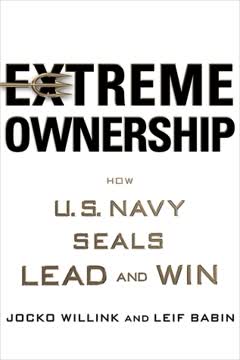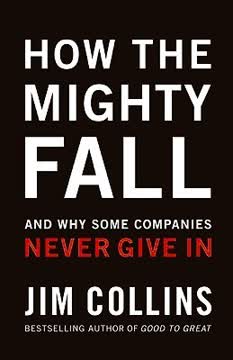Key Takeaways
1. Leadership Ability Sets the Ceiling for Personal and Organizational Effectiveness
"If you can get a handle on this law, you will see the incredible impact of leadership on every aspect of life."
Leadership is the limiting factor. An individual's leadership ability determines their level of effectiveness and the potential impact of their organization. This concept, known as the Law of the Lid, suggests that personal and organizational success is capped by leadership ability.
Examples of the Law of the Lid in action:
- McDonald's brothers vs. Ray Kroc
- Apple under Steve Wozniak vs. Steve Jobs
Raising the leadership lid. To increase effectiveness and achieve greater success:
- Recognize leadership as a critical factor
- Invest in personal leadership development
- Surround yourself with strong leaders
- Continuously work on improving leadership skills
2. True Leadership is Measured by Influence, Not Position
"The true measure of leadership is influence—nothing more, nothing less."
Leadership transcends titles. Genuine leadership isn't about having a high-ranking position or impressive title. It's about the ability to influence others and inspire them to follow willingly. This influence comes from a combination of factors:
Sources of leadership influence:
- Character and integrity
- Strong relationships
- Expertise and knowledge
- Past successes
- Ability to get things done
Developing influence. To increase your leadership influence:
- Focus on building trust and credibility
- Develop your skills and expertise
- Cultivate strong relationships at all levels
- Demonstrate consistent performance
- Lead by example in all areas of life
3. Effective Leadership Develops Through Continuous Learning and Experience
"Leadership develops daily, not in a day."
Leadership is a journey. Becoming an effective leader is not an overnight process but a continuous journey of growth and development. It requires consistent effort, learning from experiences, and deliberate practice over time.
Key aspects of leadership development:
- Self-awareness and reflection
- Seeking feedback and mentorship
- Formal education and training
- Practical leadership experiences
- Learning from failures and successes
Commitment to growth. To develop as a leader:
- Create a personal growth plan
- Read books and attend seminars on leadership
- Seek out challenging leadership opportunities
- Reflect regularly on your experiences and lessons learned
- Find mentors and learn from other successful leaders
4. Leaders Navigate by Charting the Course and Anticipating Challenges
"Anyone can steer the ship, but it takes a leader to chart the course."
Strategic vision and planning. Effective leaders don't just react to circumstances; they proactively chart a course for their organization. This involves having a clear vision, developing a strategic plan, and anticipating potential obstacles.
Key elements of effective navigation:
- Clearly defined goals and objectives
- Understanding of the current reality
- Anticipation of potential challenges
- Contingency planning
- Effective communication of the plan to the team
Developing navigation skills. To improve your ability to chart the course:
- Cultivate a long-term perspective
- Practice strategic thinking and planning
- Stay informed about industry trends and changes
- Develop problem-solving and decision-making skills
- Learn from both successes and failures in execution
5. Great Leaders Add Value to Others Through Selfless Service
"Leaders add value by serving others."
Servant leadership. The best leaders focus on adding value to their followers and organization rather than seeking personal gain. This approach builds trust, loyalty, and commitment among team members.
Ways leaders add value:
- Mentoring and developing team members
- Removing obstacles to success
- Providing resources and support
- Recognizing and rewarding good performance
- Creating opportunities for growth
Cultivating a service mindset. To become a leader who adds value:
- Focus on the needs of your team and organization
- Look for ways to help others succeed
- Be willing to sacrifice personal gain for the greater good
- Continuously seek ways to improve the lives of those you lead
- Lead by example in serving others
6. Trust is the Foundation of Strong Leadership
"Trust is the foundation of leadership."
Building trust. Trust is the cornerstone of effective leadership. Without it, a leader's influence is severely limited. Trust is built through consistent actions, integrity, and follow-through on commitments.
Key components of trust:
- Consistency between words and actions
- Transparency and open communication
- Admitting mistakes and taking responsibility
- Keeping promises and commitments
- Demonstrating competence and expertise
Developing trustworthiness. To build and maintain trust:
- Be honest and transparent in all dealings
- Follow through on commitments consistently
- Admit mistakes and take responsibility for failures
- Show genuine care and concern for others
- Demonstrate competence in your role and continuously improve
7. People Naturally Follow Leaders Stronger Than Themselves
"People naturally follow leaders stronger than themselves."
Strength attracts. Strong leaders naturally attract followers because people are drawn to those they perceive as more capable of leading them to success. This strength isn't just about personality but encompasses various aspects of leadership.
Attributes that attract followers:
- Clear vision and direction
- Confidence and decisiveness
- Proven track record of success
- Strong character and integrity
- Ability to overcome challenges
Developing leadership strength. To become a leader others want to follow:
- Continuously work on personal growth and development
- Build a track record of success in your field
- Develop and articulate a compelling vision
- Demonstrate courage in facing challenges
- Cultivate a strong character and set of values
8. Leadership Intuition Stems from Experience and Observation
"Leaders are readers of their situation."
Developing intuition. Leadership intuition is the ability to quickly assess situations and make sound decisions without having all the information. This skill is developed through experience, keen observation, and a deep understanding of leadership principles.
Aspects of leadership intuition:
- Reading people and situations
- Anticipating problems and opportunities
- Understanding organizational dynamics
- Recognizing patterns and trends
- Making quick, informed decisions
Sharpening intuition. To improve your leadership intuition:
- Gain diverse leadership experiences
- Practice active observation and reflection
- Study leadership principles and case studies
- Seek feedback on your decisions and perceptions
- Analyze past successes and failures to identify patterns
9. Leaders Attract and Develop People Similar to Themselves
"Who you are is who you attract."
The magnetism of leadership. Leaders tend to attract followers who share similar values, attitudes, and energy levels. This principle underscores the importance of personal growth and development for leaders.
Areas where leaders attract similar people:
- Work ethic and dedication
- Vision and ambition
- Character and integrity
- Skills and competencies
- Attitude and energy level
Leveraging the law of magnetism. To attract and develop strong leaders:
- Focus on personal growth and improvement
- Clearly communicate your values and vision
- Create a culture that reflects your leadership style
- Be intentional about mentoring and developing others
- Seek out and recruit individuals with complementary strengths
10. Connecting Personally with Followers Precedes Leading Them
"You can't move people to action unless you first move them with emotion."
The power of connection. Before leaders can effectively guide their followers, they must establish a personal connection. This emotional bond creates trust, respect, and a willingness to follow.
Ways to connect with followers:
- Show genuine interest in their lives and well-being
- Listen actively and empathetically
- Share personal stories and experiences
- Demonstrate care through actions, not just words
- Celebrate successes and support during challenges
Building stronger connections. To improve your ability to connect:
- Develop your emotional intelligence
- Practice active listening skills
- Be authentic and vulnerable in your interactions
- Spend time getting to know your team members personally
- Look for opportunities to serve and support your followers
11. A Leader's Inner Circle Determines Their Potential Impact
"A leader's potential is determined by those closest to him."
The power of the team. The effectiveness and potential of a leader are greatly influenced by the quality of their inner circle - the key people they surround themselves with and rely on.
Characteristics of a strong inner circle:
- Complementary skills and strengths
- Shared values and vision
- High levels of trust and loyalty
- Ability to challenge and provide honest feedback
- Strong leadership abilities of their own
Building a strong inner circle. To develop a powerful team:
- Be intentional about selecting key team members
- Invest in developing the leadership abilities of your inner circle
- Foster an environment of trust and open communication
- Encourage diverse perspectives and healthy debate
- Regularly evaluate and adjust your inner circle as needed
12. Empowering Others is Essential for Organizational Growth
"Only secure leaders give power to others."
The power of empowerment. True leaders understand that empowering others is key to organizational growth and success. By giving power and responsibility to others, leaders multiply their own effectiveness and develop future leaders.
Benefits of empowerment:
- Increased organizational capacity and productivity
- Development of future leaders
- Higher employee engagement and satisfaction
- More innovation and creative problem-solving
- Greater organizational resilience and adaptability
Practicing empowerment. To become an empowering leader:
- Delegate authority along with responsibility
- Provide necessary resources and support
- Allow for mistakes and use them as learning opportunities
- Recognize and reward initiative and success
- Create a culture that encourages risk-taking and innovation
Last updated:
FAQ
What's The 21 Irrefutable Laws of Leadership about?
- Leadership Principles Explained: The book outlines 21 essential laws that govern effective leadership, emphasizing the importance of understanding and applying these laws to enhance influence.
- Real-Life Examples: John C. Maxwell uses historical and contemporary examples, such as Harriet Tubman and Ray Kroc, to illustrate each law, making the concepts relatable and actionable.
- Focus on Growth: It encourages continuous personal and professional development, asserting that leadership is a journey requiring daily commitment and learning.
Why should I read The 21 Irrefutable Laws of Leadership?
- Timeless Leadership Insights: The book provides foundational principles applicable across various contexts, whether in business, community, or personal life.
- Practical Application: Each law is accompanied by actionable steps and exercises, allowing readers to implement the teachings in their own leadership practices.
- Inspiration and Motivation: Maxwell’s engaging writing style and compelling stories inspire readers to reflect on their leadership journey and strive for improvement.
What are the key takeaways of The 21 Irrefutable Laws of Leadership?
- Leadership Ability is Key: The Law of the Lid states that leadership ability determines a person’s level of effectiveness, impacting both personal and organizational success.
- Influence is Essential: The Law of Influence highlights that the true measure of leadership is influence, emphasizing the importance of building relationships and trust.
- Continuous Development: The Law of Process teaches that leadership develops daily, not in a day, reinforcing the idea that growth is a gradual and ongoing process.
What are the best quotes from The 21 Irrefutable Laws of Leadership and what do they mean?
- "Leadership ability is the lid...": This quote encapsulates the Law of the Lid, indicating that one's leadership skills directly limit or enhance their potential.
- "People follow leaders stronger...": Reflects the Law of Respect, suggesting individuals are naturally drawn to those with greater leadership qualities.
- "You can’t move people to action...": From the Law of Connection, emphasizing the importance of emotional engagement in leadership to inspire action.
What is the Law of the Lid in The 21 Irrefutable Laws of Leadership?
- Definition of the Law: It states that leadership ability determines a person’s level of effectiveness, setting a ceiling on their potential and that of their team.
- Impact on Organizations: A leader's low ability limits the effectiveness of the entire organization, regardless of the talent of its members.
- Example of McDonald's: The story of Dick and Maurice McDonald illustrates this law; their lack of leadership skills prevented business expansion until Ray Kroc took over.
How does the Law of Influence work in The 21 Irrefutable Laws of Leadership?
- Core Concept: The Law of Influence posits that the true measure of leadership is influence, not authority, emphasizing the ability to inspire and motivate others.
- Myths of Leadership: Maxwell debunks myths like equating leadership with management, reinforcing that true leadership is earned through influence.
- Example of Mother Teresa: Her influence stemmed from character and dedication, garnering respect and loyalty from followers.
What is the significance of the Law of Process in The 21 Irrefutable Laws of Leadership?
- Gradual Development: The Law of Process asserts that leadership develops daily, not in a day, highlighting the importance of consistent effort and learning.
- Phases of Growth: Maxwell outlines five phases of leadership growth, from not knowing what you don’t know to becoming instinctive in your abilities.
- Example of Anne Scheiber: Her story serves as a metaphor for the compounding effect of daily leadership development.
How can I apply the Law of Navigation from The 21 Irrefutable Laws of Leadership?
- Planning and Strategy: The Law of Navigation emphasizes that leaders must create clear plans and strategies for their teams.
- Learning from Experience: Effective navigators draw on past experiences and current conditions to make informed decisions.
- Example of Amundsen vs. Scott: Their contrasting expeditions illustrate the importance of thorough planning and adaptability in leadership.
What does the Law of Addition entail in The 21 Irrefutable Laws of Leadership?
- Service-Oriented Leadership: The Law of Addition states that leaders add value by serving others, prioritizing the needs of their followers.
- Jim Sinegal's Example: As CEO of Costco, he exemplifies this law by treating employees well, fostering a culture of respect and loyalty.
- Impact on Relationships: By focusing on adding value, leaders build trust and loyalty, encouraging collaboration and success.
How does the Law of Solid Ground relate to trust in leadership?
- Foundation of Leadership: The Law of Solid Ground asserts that trust is the foundation of leadership, requiring competence, connection, and character.
- Consequences of Broken Trust: Leaders who violate trust risk losing their influence and ability to lead.
- Building Trust: Trust is built through consistent actions and integrity, and leaders must admit mistakes to regain lost trust.
What is the Law of Connection and why is it important in The 21 Irrefutable Laws of Leadership?
- Emotional Engagement: The Law of Connection states that leaders must connect emotionally with followers before asking for action.
- Building Relationships: Effective leaders prioritize relationship-building, leading to greater loyalty and willingness to follow.
- Example of Ronald Reagan: Known for his warmth and approachability, Reagan exemplified this law by connecting with individuals and audiences.
How does the Law of Empowerment encourage effective leadership in The 21 Irrefutable Laws of Leadership?
- Empowering Others: The Law of Empowerment emphasizes that secure leaders give power to others, creating an environment for team success.
- Overcoming Barriers: Leaders must address barriers like fear of job security to foster a culture of empowerment.
- Long-Term Benefits: Empowered teams are more likely to achieve success and drive innovation, enhancing the leader's position.
Review Summary
The 21 Irrefutable Laws of Leadership receives mixed reviews. Many readers praise it as an insightful, practical guide to leadership principles, with clear examples and actionable advice. They appreciate Maxwell's experience and find the laws applicable to various leadership roles. However, some critics argue the book is repetitive, filled with common sense ideas, and overly focused on sports examples. A few readers take issue with Maxwell's self-promotion and religious undertones. Despite the criticisms, many still consider it a valuable resource for aspiring and current leaders.
Similar Books



![Zero to One, Start Now Get Perfect Later, Shoe Dog A Memoir by the Creator of Nike, [Hardcover] Crushing It 4 Books Collection Set Summary](https://images.sobrief.com/social/cover_zero-to-one-start-now-get-perfect-later-shoe-dog-a-memoir-by-the-creator-of-nike-hardcover-crushing-it-4-books-collection-set_360px_1747184952.jpg)





Download PDF
Download EPUB
.epub digital book format is ideal for reading ebooks on phones, tablets, and e-readers.













